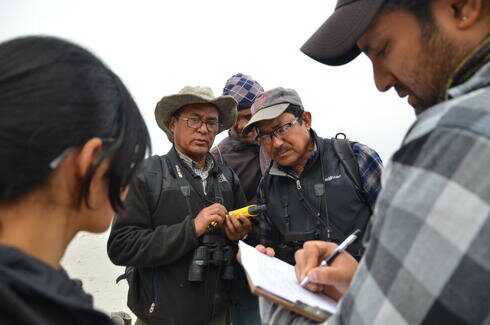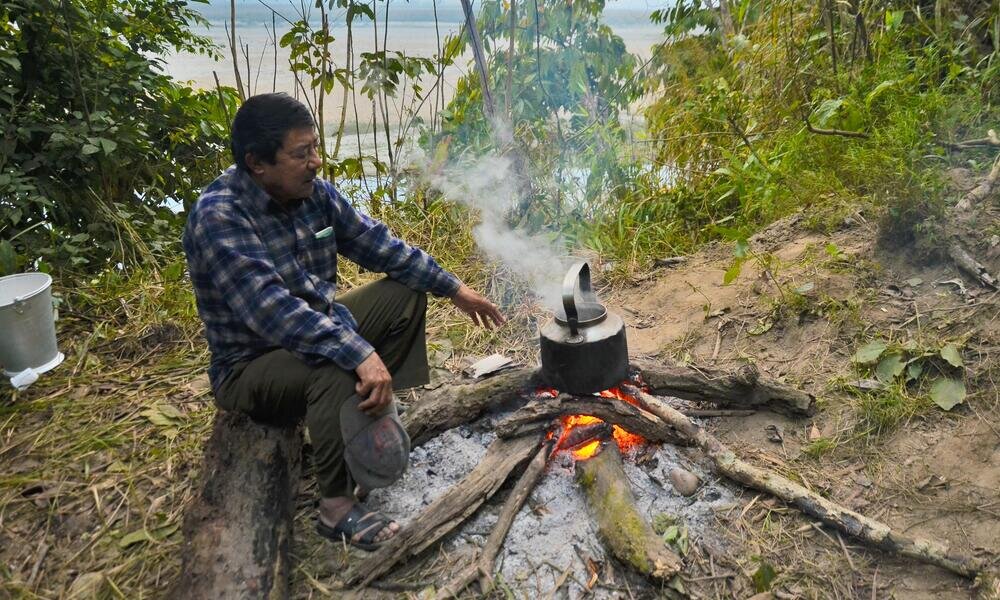By Jenna Bailey | Employee Engagement Intern
2022 - The Year of the Tiger
The start of 2022 brings the beginning of the final year of the most ambitious recovery effort ever undertaken for a single species. TX2, the goal to double the number of tigers in the wild by 2022, was a global commitment made in 2010 by 13 tiger range governments. Once over 100,000 strong, the wild tiger population was believed to be down to just 3,200 in 2010. WWF supports and advises these governments in achieving this goal which is vital in ensuring a future for tigers. 2022, the Year of the Tiger, according to the Chinese Lunar calendar, is here and is a time to reflect over the progress that has been made since 2010.
Since the project began, tiger populations have been increasing in countries such as Bhutan, China, India, Nepal, and Russia, where there is political support, funding, and collaboration. Other countries are struggling to see positive results due to hunting and habitat loss which continue to be the primary drivers for tiger population declines across Southeast Asia including Indonesia, Myanmar, Thailand, and Malaysia.
This massive recovery effort is being led by governments, conservation organizations, and communities and we often think about the progress on a large scale. But it is also important to celebrate the individuals in the field that make the research for this kind of project possible. Since TX2 began in 2010, teams of scientists have dedicated countless hours to tracking the location of tigers and closely monitoring changes in their population. WWF-Nepal did a special interview of a team of researchers to highlight what a day in the life of a tiger tracking team in the Terai Arc Landscape of Nepal looks like.
A Day in the Life of a Tiger Tracker
This six-member team of researchers is led by Bishnu Bahadar Lama, who is often regarded as Nepal’s finest tiger tracker. Bishnu and his team are on a tiger monitoring project that will last 20 days and will cover a total area of 44 square miles. The team starts every morning early with coffee and biscuits around the fire. After breakfast at camp, the team prepares the equipment and gear that they will need for the day. Using their map that is divided into different sites, each 1.5 square miles in size, they figure out which area they need to cover that day. They pack with them ten pairs of cameras for the day, each equipped with motion/infrared sensors and GPS to detect and monitor wildlife. They head out into the forest for a long day of tracking.
After an hour of hiking, they are at their first site, Nakkali Khola. After spotting tiger tracks along the river trail, the team chooses locations to mount the cameras each 16 inches from the ground and 26 feet apart from on another. They mark each camera with a specific ID number and test the placement of the camera to ensure it would capture a tiger walking. The cameras will be left in each grid area of the forest for the next 15-20 days and are used to capture images of tigers which can then be identified by their unique stripe pattern. This information can be analyzed to estimate tiger populations.
Following the camera installation, the team must conduct habitat occupancy and line transect surveys. These surveys help the team record signs of tiger and prey activity in the surrounding area to further understand the range occupied by both tigers and the species they prey on. For the occupancy survey, the team walks just over one mile of the riverbed and takes detailed notes and photographs of any tiger footprints found. The line transect survey requires the team to walk a straight line called a “transect” and note the distance, direction, and sex of any prey species found along the route. An abundance of prey is essential for the survival of tigers in an area, so understanding prey populations can give insight into why tigers are struggling or thriving in an area.
The surveys take about four hours each and once completed, the team finally makes the trek back to camp. They arrive back by 7:15pm, unpack their supplies, and prepare for dinner and stories around the fire. The team will remain in the forest for the entirety of their 20-day tiger tracking expedition and each day will be just as busy as the next.
How You Can Help!
With a common passion for tiger conservation, Bishnu and his team are an admirable example of the hard work going into protecting tigers in the TX2 project. Thanks to supporters like you, WWF has accelerated tiger monitoring, habitat protection, anti-poaching efforts, and more to save the beloved species, and for the first time in decades, the wild tiger population is showing signs of recovery. The fight is not over! Your ongoing commitment makes a difference in our work and sets an inspiring example that together, change is possible. Thank you!
Links:
By Jenna Bailey | Employee Engagement Intern
By Jenna Bailey | Employee Engagement Intern
Project reports on GlobalGiving are posted directly to globalgiving.org by Project Leaders as they are completed, generally every 3-4 months. To protect the integrity of these documents, GlobalGiving does not alter them; therefore you may find some language or formatting issues.
If you donate to this project or have donated to this project, you can receive an email when this project posts a report. You can also subscribe for reports without donating.
Support this important cause by creating a personalized fundraising page.
Start a Fundraiser
